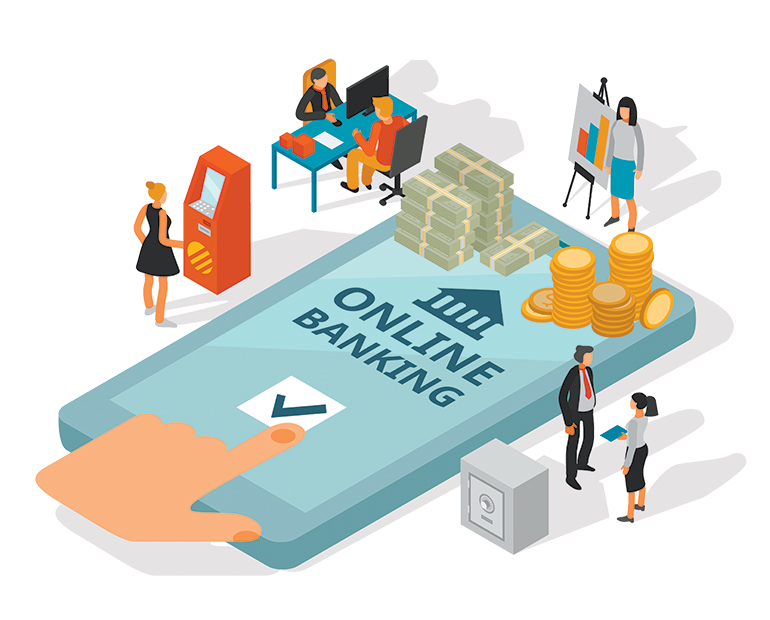Comprehensive Guide to Online Banking
In the era of technological advancements, online banking has emerged as a transformative force, allowing individuals to conduct financial transactions conveniently through the internet. Also known as Internet banking or web banking, this digital evolution has reshaped the landscape of traditional banking, offering a plethora of services that were once confined to local branches. In this comprehensive guide, we will explore the intricacies of online banking, its advantages, disadvantages, the essentials for safe usage, and its impact on the financial landscape.

Understanding Online Banking: Revolutionizing Financial Transactions
Online banking serves as a virtual gateway, providing users with the ability to perform almost every financial service traditionally offered by a local branch. From deposits and transfers to online bill payments, the digital realm of online banking transcends physical constraints. Virtually every banking institution, big or small, now provides some form of online banking accessible through computers or dedicated apps.
Key Components of Online Banking
1. Accessibility and Convenience:
With online banking, the need to visit a physical bank branch for routine transactions becomes obsolete. Users can effortlessly conduct their banking activities at their convenience, whether at home, work, or on the go. Utilizing a computer, tablet, or mobile phone, individuals can access online banking services through a browser or a dedicated app, with the latter constituting mobile banking.
2. Essential Requirements:
To embark on the online banking journey, users need a device (computer, tablet, or mobile phone), an internet connection, and a bank or debit card. Registering for the bank’s online service and creating a secure password is the initial step to gaining access. Once registered, users can seamlessly engage in various banking activities through the digital platform.
3. Banking Transactions Offered:
While specific services may vary by institution, most banks provide fundamental online transactions such as transfers and bill payments. Some institutions take it a step further, allowing customers to open new accounts, apply for credit cards, order checks, and even report a change of address through online banking portals. Mobile apps equipped with remote deposit capture features enable users to deposit checks by capturing images of the front and back via their smartphones.
4. Online-Only Banks:
A notable evolution in the banking landscape is the rise of online-only banks. These financial entities operate exclusively in the digital realm, devoid of physical branches. Prominent examples include Ally Bank, Discover Bank, and Synchrony Bank. Online-only banks often offer low-cost or free banking services, higher interest rates on savings accounts, and tools for efficient money management. Customer service for these banks primarily relies on phone, email, or online chat interactions.
Advantages of Online Banking:
1. Convenience:
Online banking excels in offering unparalleled convenience. Basic transactions like paying bills and transferring funds can be executed anytime, anywhere, seven days a week. The advent of payment networks like Zelle enables users to send money to others seamlessly.
2. Speed and Efficiency:
The efficiency of online banking is evident in the speed of fund transfers, especially between accounts held within the same institution. Openings and closures of various accounts, from fixed deposits to recurring deposit accounts, can be swiftly executed online.
3. Monitoring and Security:
Continuous access to banking information allows users to closely monitor their accounts, facilitating early detection of fraudulent activities. Online banking acts as a guardrail against financial damage or loss, providing an added layer of security.
Disadvantages of Online Banking:
1. Novice Challenges:
For individuals new to online banking, the transition to electronic systems may pose initial challenges, hindering transaction processing. Some prefer face-to-face transactions with tellers for a more straightforward experience.
2. Cash Accessibility:
Online banking falls short when immediate access to large amounts of cash is needed. While ATMs may provide a certain limit, visiting a physical branch becomes necessary for substantial withdrawals.
3. Security Vulnerabilities:
Despite continuous improvements in security, online banking remains susceptible to hacking. Users are advised to use private data plans rather than public Wi-Fi networks to prevent unauthorized access.
4. Connectivity Dependence:
Online banking’s functionality is contingent on a reliable internet connection. Connectivity issues may occasionally disrupt the determination of transaction success.
Practicing Safe Online Banking:
To ensure both the safety of money and personal information, adopting secure online banking practices is essential. Users are encouraged to:
Set strong, unique passwords and change them regularly.
Employ password manager programs for enhanced security.
Enable two-factor or multi-factor authentication when available.
Avoid sharing online banking details and refrain from using public Wi-Fi.
Regularly check accounts for suspicious activity and promptly report any suspected fraud.
Online Banking for Bill Payments:
Online banking is a robust solution for managing monthly bill payments. Users can log in to their accounts to arrange bill payments manually or set up automatic payments. Online bill pay streamlines the process, especially for bills with regular, set amounts, such as mortgages, insurance, or car payments.
Embracing the Future of Banking
online banking stands as a cornerstone in the ongoing digital transformation of the financial industry. Whether accessed through traditional banks’ online features or via online-only banks, the benefits of convenience, efficiency, and enhanced security are reshaping how individuals manage their finances. As technology continues to advance, online banking will likely evolve further, offering more sophisticated features and further cementing its place as a central hub for financial transactions. Embracing the future of banking means embracing the convenience and innovation that online banking brings to our financial lives.






